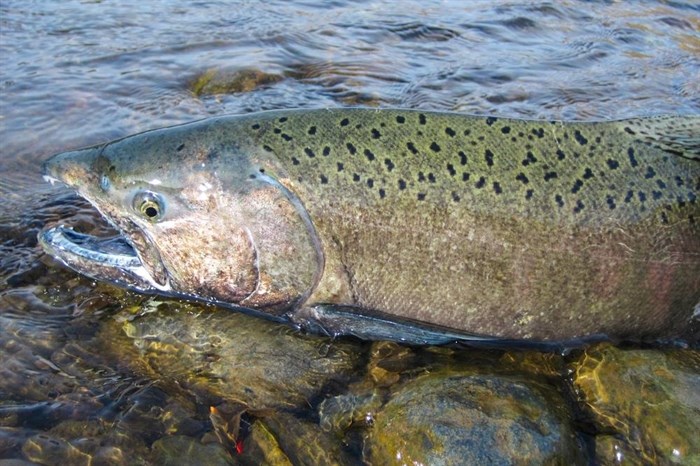
File Photo
Image Credit: Shutterstock
September 01, 2017 - 6:30 PM
Every drop of water saved can help salmon survive what is proving to be a difficult spawning season in many of the Interior’s creeks and rivers.
Michael Crowe, with the Department of Fisheries and Oceans, says drought conditions in many of the region’s watersheds are posing a risk to both spawning salmon, and juvenile salmon still growing in freshwater systems.
“Salmon require adequate flows in order to successfully carry out their lifecycle in freshwater. That includes the ability to migrate upstream from the ocean. There has to be sufficient depths and water velocities to allow them to swim upstream,” Crowe says.
With the drought conditions also comes hotter temperatures, which can be fatal to fish if they pass a certain threshold.
Another concern with low water flows is it’s harder for fish to hide from predators like birds, says Doug Edwards, also with the Department of Fisheries.
A number of bulletins have been issued by the provincial government, in conjunction with assessments by the Department of Fisheries and Oceans, due to the drought conditions this year.
READ MORE: Drought ratings upgraded in Okanagan, Shuswap and Thompson regions
Many watersheds are at a level three drought, with residents in those areas being asked to voluntarily reduce water usage by 30 per cent. Most Okanagan water utilities are currently experiencing normal water supply, it's the small water purveyors that are impacted by the drought conditions.
“We understand these issues can be difficult because you’re asking people to take on impacts to their businesses and livelihoods. It’s about finding a balance of human needs and ecological needs as well,” Crowe says.
It’s likely too early to tell how much the drought conditions will affect this year’s salmon run, but so far, the return has been underwhelming.
“We don’t know the numbers yet but we know they’re generally low all around,” Edwards says. “They were expected to be low, but they’re coming in lower than expected.”
Chinook salmon are currently migrating through Interior waterways, and sockeye have not fully entered the system yet.
With low returns coming up from the coast, this year’s drought conditions are not making things any easier.
“We're exacerbating an already unfortunate situation,” Crowe says.
With more dry, hot weather on the way, residents are being reminded that every drop counts.
“Our concern is if conditions continue to be a problem throughout the fall there will be unfortunate impacts to spawning success as a result of the drought. We request people to be conserve. Any water saved and retained in streams will have some small and positive cumulative benefit to the fish,” Crowe says.
Click here for the latest bulletins on drought conditions.
To contact a reporter for this story, email Charlotte Helston or call 250-309-5230 or email the editor. You can also submit photos, videos or news tips to the newsroom and be entered to win a monthly prize draw.
We welcome your comments and opinions on our stories but play nice. We won't censor or delete comments unless they contain off-topic statements or links, unnecessary vulgarity, false facts, spam or obviously fake profiles. If you have any concerns about what you see in comments, email the editor in the link above.
News from © iNFOnews, 2017